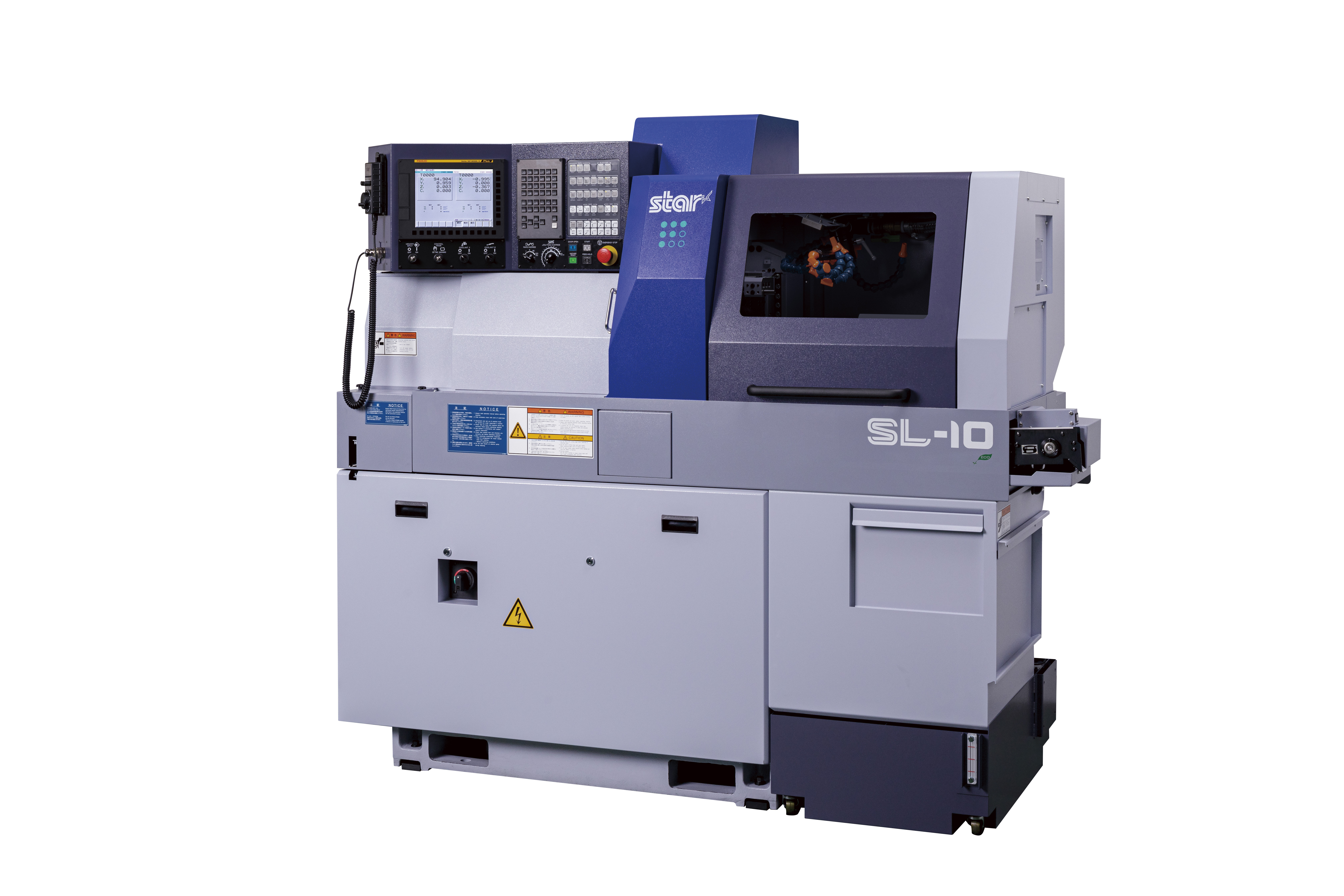Star Micronics to Launch Two Models of the Swiss-Type Automatic Lathe in the SL Series
Small diameter processing lineup gets new models
Star Micronics Co., Ltd. has developed the SL-7 and SL-10, two new SL Series Swiss-type automatic lathes (Note 1), they are available from October 2021. These models were developed to target small diameter machining needs in devices and instruments for the information and communication, automotive, and medical industries.
As complexity and diversity increase every day for small diameter machining, these two models will augment Star’s multi-processing capacity, which currently offers the SR-10J type C in its small diameter processing lineup. The SL-7 and SL-10 can process material diameters of up to 7 mm and 10 mm, respectively.
The gang type tool post for face machining has a tool holder for turning and a cross drilling unit for multi-processing in a vertical layout. The 5-spindle cross drilling unit allows tool unit changes at four cartridge positions depending on the shape to be processed which offers wider tooling flexibility on a compact machine size optimized for small diameter processing. The 6-spindle unit with Y2-axis control for backworking has two spindles in three rows and can mount up to four power-driven tool units in their respective positions. This enhanced multi-processing capability in backworking will contribute to reducing cycle time through the efficient splitting of processes.
Various structural designs are adopted to optimize operability and workability for the operator. A flip-up door with a large opening provides ample workspace needed in the cutting chamber for setup changes or maintenance. The operation panel has an NC screen angled toward the operator for better visibility during operations. Consideration has also been given to the software with the addition of more convenient functions. An automatic backup function enables the restoration of parameters and programs. The batch program data input/output screen enables the management of various data types together with the program including tool unit and geometry offset to support your setup jobs.

Features of the SL Series
High Functionality and Productivity
- The gang type tool post for face machining has a cartridge type 5-spindle cross drilling unit providing four cartridge positions to mount various tool units for a wide variety of processes.
- The 6-spindle unit with Y2-axis control for backworking has two spindles in three rows and can mount up to four power-driven tool units in their respective positions. With this unit you can reduce cycle time by efficiently splitting processes overlapping at the front and back.
- A step cycle function is equipped as standard for effective chip breaking
- High-output motors provide more powerful machining capability with high speed to optimize small diameter part processing.
High Accuracy
- The motor for cross machining is equipped with a cooling fan, and the pedestal is covered with sheet metal to avoid direct contact with coolant to prevent overheating.
- Sensors in various parts of the machine enable highly accurate and flexible corrections of thermal displacement.
- Built-in sensors not only on the main spindle with a built-in motor but also on the sub spindle ensure high accuracy indexing.
Operability and Workability
- A flip-up door in the cutting chamber provides ample workspace for setup changes and maintenance.
- The 10.4-inch display provides visibility during operations, and the operation panel angled toward the operator improves operability.
- Various useful functions are provided to support operators’ workability. The Multi-system Program Management Screen can manage programs having identical program numbers across the systems in a batch. The Tool Unit No. Input Screen enables the registration of unit numbers while confirming the shape and dimension of the tool to be mounted.
NOTE 1: Swiss-type automatic lathe
The Swiss-type automatic lathe was devised as watch component processing machinery in Switzerland in 1870s. Known as a “sliding head-type automatic lathe” as well, it has remarkable characteristics of high-precision cutting of components with longer length compared with the diameter.
In general, if long and narrow parts are processed with a general-purpose lathe, flexure will occur on the workpiece, making finishing with the correct dimensions impossible. The Swiss-type automatic lathe utilizes a guide bush to function as a material steady rest. The tool, positioned at a certain distance from the guide bush, gives a cutting motion only the direction of outside diameter. This allows the workpiece to be cut accurately with no flexure. As for axial motion, the headstock, rather than the tailstock, moves while clamping a workpiece.
